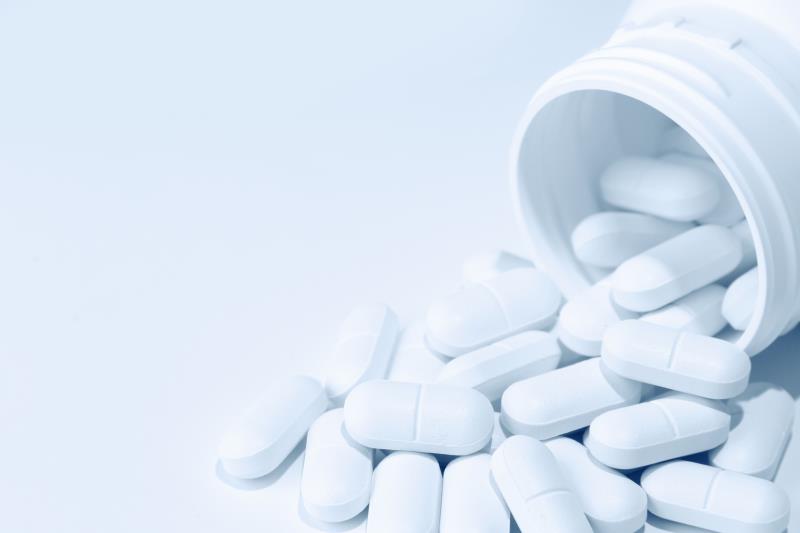Glycaemic control in early T2D improved with novel oral GLP-1 receptor agonist





For adults with early type 2 diabetes (T2D) not adequately controlled by diet and exercise alone, treatment with the investigational small-molecule, nonpeptide glucagon-like peptide-1 (GLP-1) receptor agonist orforglipron yields significant reductions in glycated haemoglobin levels, according to data from the phase III ACHIEVE-1 trial.
After 40 weeks of treatment, the mean glycated haemoglobin level decreased by −1.24 percentage points with the 3-mg dose, −1.47 percentage points with the 12-mg dose, and −1.48 percentage points with the 36-mg dose as compared with −0.41 percentage points with placebo. Each tested dose of orforglipron demonstrated superiority over placebo (p<0.001). [N Engl J Med 2025;doi:10.1056/NEJMoa2505669]
Notably, more orforglipron-treated patients achieved the glycated haemoglobin target of <7.0 percent (68 percent in the 3-mg group, 73 percent in the 12-mg group, and 73 percent in the 36-mg group) and the lower target of ≤6.5 percent (57 percent in the 3-mg group, 58 percent in the 12-mg group, and 62 percent in the 36-mg group) relative to placebo-treated patients (33 percent and 15 percent, respectively; p<0.001 for all comparisons).
Additionally, participant-monitored blood glucose profiles showed significant reductions in fasting serum glucose, along with improved pre- and post-meal blood glucose values, that were consistent with the changes observed in glycated haemoglobin levels.
The mean glycated haemoglobin level at week 40 ranged between 6.5 percent and 6.7 percent with orforglipron.
These results were presented at the 2025 ADA Scientific Sessions and published simultaneously in the New England Journal of Medicine.
According to first study author Dr Julio Rosenstock from the Velocity Clinical Research Center at Medical City Dallas, Dallas, Texas, US, the magnitude of reduction in the glycated haemoglobin levels in the trial “suggests consistency” with results from PIONEER 1 (Peptide Innovation for Early Diabetes Treatment 1) and SUSTAIN 1 (Semaglutide Unabated Sustainability in Treatment of Type 2 Diabetes), which evaluated oral and injectable GLP-1 receptor agonists, respectively, in patients with a relatively short duration of T2D and baseline characteristics similar to those in ACHIEVE-1. [Diabetes Care 2019;42:1724-1732; Lancet Diabetes Endocrinol 2017;5:251-260]
“We hypothesized that the lowest glycated haemoglobin levels observed with orforglipron at week 40 and the lack of a clear glycaemic dose–response relationship suggest a floor effect on the maximum achievable glycaemic response, consistent with findings for other GLP-1 receptor agonists,” Rosenstock continued. [Diabetes Care 2025;48:905-913]
Weight outcomes
In terms of body weight, “progressive and dose-related reductions of up to 7.6 percent from baseline were observed with orforglipron,” with the changes appearing to have not reached a plateau at 40 weeks, he noted.
Mean body weight decreased by 4.5 percent with the 3-mg orforglipron dose, 5.8 percent with the 12-mg dose, and 7.6 percent with the 36-mg dose vs 1.7 percent with placebo. This translated to a weight loss of 4.2, 5.2, and 7.2 kg vs 1.5 kg, respectively.
More orforglipron-treated patients achieved a body-weight reduction of at least 5 percent (43 percent to 61 percent), at least 10 percent (15 percent to 30 percent), and at least 15 percent (4 percent to 10 percent) compared with those who received placebo (17 percent, 6 percent, and 1 percent, respectively).
“Beyond glycaemic control and body-weight reduction, we observed reductions in cardiometabolic risk factors, including lipid levels, waist circumference, and systolic blood pressure, findings that indicate a favourable cardiovascular risk profile,” Rosenstock said.
Safety
Treatment-emergent adverse events (AEs) occurred in 71.3 percent with 3-mg orforglipron, 81.0 percent with the 12-mg dose, 84.4 percent with the 36-mg dose, and 73.9 percent with placebo. Mild-to-moderate gastrointestinal events were the most frequently reported, most of which occurred during dose escalation. None of the patients experienced episodes of severe hypoglycaemia or pancreatitis.
The proportion of patients with serious AEs were 5.6 percent with 3-mg orforglipron, 5.1 percent with the 12-mg dose, 2.8 percent with the 36-mg dose, and 3.6 percent with placebo. Permanent treatment discontinuation due to AEs occurred in 5.6 percent, 4.4 percent, 7.8 percent, and 1.4 percent, respectively.
“Oral small-molecule non-peptide GLP-1 receptor agonists such as orforglipron, proven to substantially reduce A1C to the 6.5–percent-range and associated with meaningful weight loss and a safety profile consistent with the GLP-1 receptor agonist class, have, indeed, the potential to be widely accepted as much earlier therapy for T2D,” Rosenstock said.
ACHIEVE-1 population
ACHIEVE-1 included 559 patients (mean age 53.4 years, 48.1 percent female, 43.8 percent Asian) with T2D that was inadequately controlled with diet and exercise alone and who had received other oral or injectable glucose-lowering medications within 3 months prior to enrolment in the trial. They were randomly assigned to receive orforglipron at a dose of 3 mg (n=143), 12 mg (n=137), or 36 mg (n=141) or placebo (n=138), administered orally once daily for 40 weeks.
At baseline, patients had a mean T2D duration of 4.4 years, mean glycated haemoglobin level of 8.0 percent, and mean body weight of 90.2 kg. A total of 38.3 percent of patients had previously received a glucose-lowering agent, mostly metformin. The patient characteristics at baseline were similar among treatment groups
“The patients in this trial were generally representative of the worldwide population of patients with T2D,” Rosenstock said.